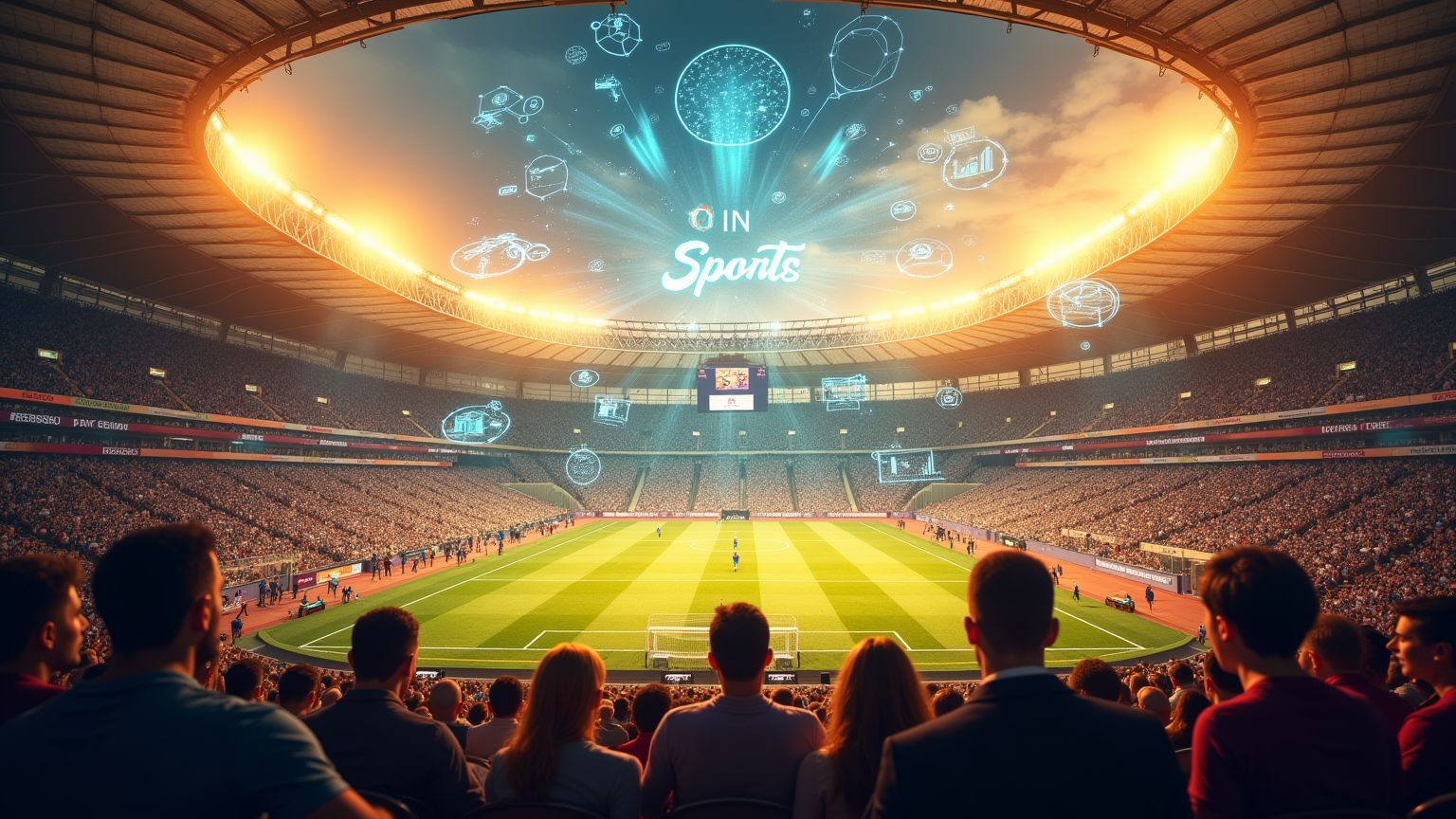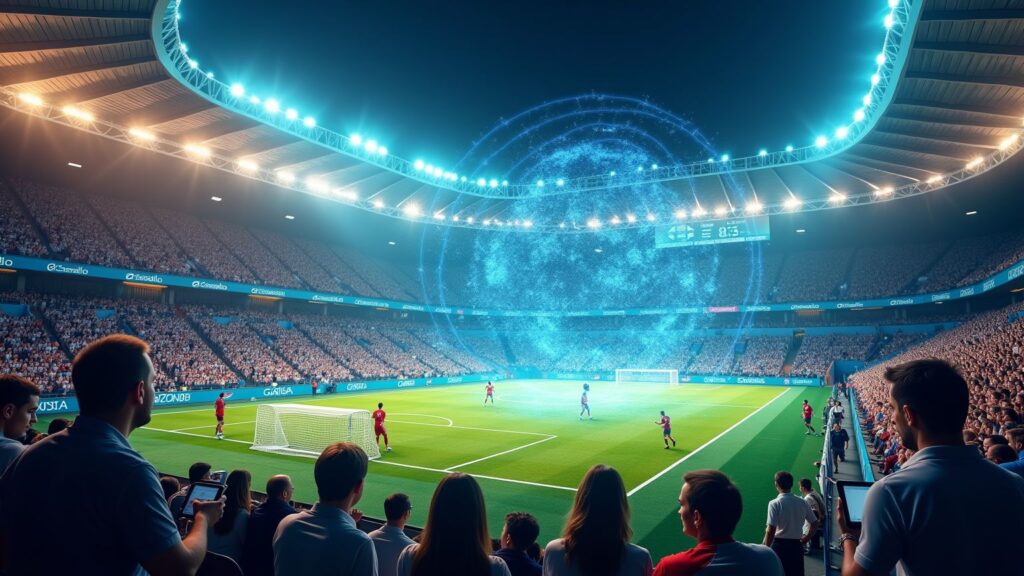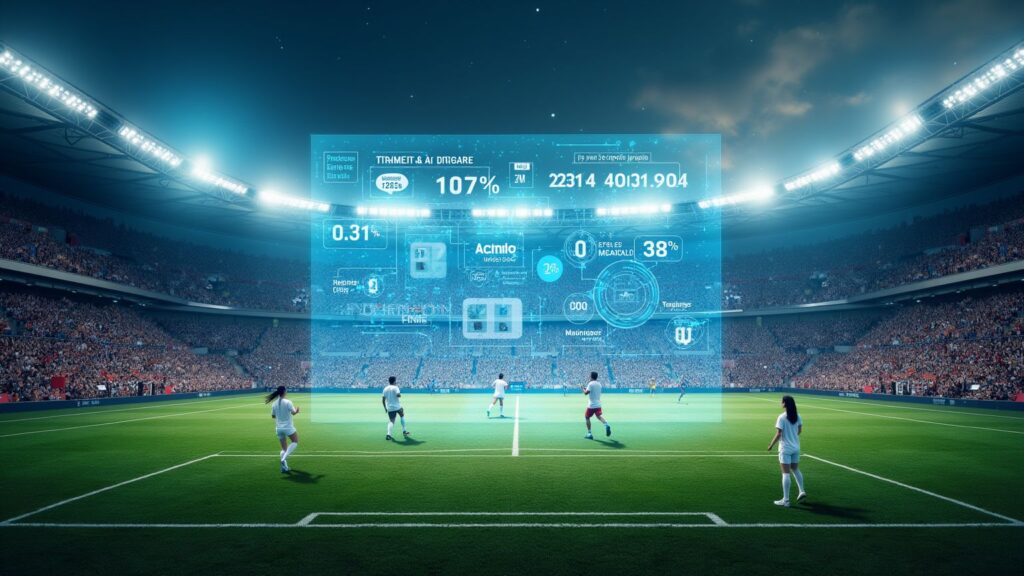How is ai used in sports: Transforming the Game On and Off the Field
When I first heard about AI in sports, I couldn’t help but picture a futuristic robot referee calling plays on…

When I first heard about AI in sports, I couldn’t help but picture a futuristic robot referee calling plays on the field.
But as I looked deeper, I realized AI isn’t just a spectator—it’s transforming the way athletes train, teams strategize, and fans engage.
From predicting injuries to personalizing your game-day experience, AI is reshaping sports as we know it. In this article, we’ll dive into the many ways, how is ai used in sports, how AI is making sports smarter, faster, and more exciting for everyone involved.
How is ai used in sports – AI in Player Performance
Athletes push their bodies to the limit every day. But even the most dedicated can only improve so much on intuition alone. That’s where AI steps in—a coach that never sleeps, offering real-time insights that elevate performance to new heights.
AI wearables like Catapult and Whoop are game-changers. These devices monitor everything from sleep patterns to recovery times, giving athletes an edge by tailoring their training regimens. Instead of guessing when they need rest, athletes know exactly when to recover and when to push harder.

Video analysis takes it even further. Tools like Dartfish dissect an athlete’s movements frame by frame, revealing inefficiencies that might otherwise go unnoticed. AI doesn’t just identify problems—it provides solutions, helping athletes correct form and optimize performance.
Injury prevention is another big win. AI systems analyze motion patterns to predict injuries before they happen, reducing the risk of career-ending accidents. For example, a football player might adjust their stride based on AI insights, avoiding potential ACL tears.
Serena Williams has used AI-driven match analysis to refine her gameplay, proving that even the best can get better with a little help from technology.
Enhanced Fan Experience: Bringing the Game to Life
Gone are the days of passively watching a game from the couch. AI is turning fans into active participants, delivering experiences that feel personalized and immersive.
Virtual reality (VR) is a standout example. Imagine sitting courtside at a Lakers game or watching a soccer match from a goalie’s perspective—all without leaving your living room. AI-enhanced VR systems make this possible, blurring the line between fan and player.
AI also curates content that matches your preferences. Platforms like SportsEngine create highlight reels tailored to your favorite teams and players, saving you from sifting through hours of footage. Whether you’re a die-hard hockey fan or just there for the goals, AI knows what you want to see.
Chatbots have changed how fans interact with teams. They answer questions, provide live updates, and even help you book tickets—all in real-time. Some bots are so responsive, you might forget you’re not talking to a human.
By making sports more interactive, AI has transformed fandom from a passive hobby into an engaging, deeply personal experience.
AI in Sports Strategy: Smarter Game Plans
For coaches and players, strategy is the name of the game. AI takes this to the next level, turning raw data into actionable insights that can mean the difference between victory and defeat.
Here’s how AI is transforming strategy:
Liverpool FC is a prime example. Their AI tools analyze every aspect of their opponents’ play, allowing them to anticipate moves and stay one step ahead. This level of insight would take a team of analysts weeks to compile—AI does it in minutes.
Even amateur athletes can benefit. Platforms like Hudl make AI tools accessible for personal performance analysis and strategy-building. Whether you’re managing a youth soccer team or playing in a weekend league, AI gives you a pro-level edge.

AI in Sports Broadcasting: Next-Level Storytelling
Sports broadcasting has come a long way from static camera angles and generic commentary. AI is at the heart of this evolution, making broadcasts more dynamic, engaging, and tailored to viewers.
AI-driven systems like WSC Sports automate highlight creation, analyzing games to pick the most exciting moments in real-time. If you’re a fan of slam dunks or last-minute goals, AI ensures those highlights are front and center.
AI-powered cameras follow the action automatically, tracking players and the ball with precision. This technology ensures every key moment is captured, even in local games where resources might be limited.
Real-time translation tools are breaking down language barriers, making sports more accessible to global audiences. Whether you’re in Tokyo or Toronto, AI ensures you get the full experience in your native language.
By combining efficiency with creativity, AI is redefining how fans consume sports content, making every broadcast feel like a custom experience.
Revolutionizing Sports Medicine: The AI Edge
Injuries are a harsh reality in sports, but AI is changing how they’re prevented and treated. For athletes, it’s a game-changer that can extend careers and save lives.
Here’s what AI brings to sports medicine:
Take the NBA, for example. Teams use AI to monitor player health throughout the season, identifying issues before they become serious. It’s not just about treating injuries—it’s about preventing them altogether.
Tools like Physimax analyze biomechanics to ensure athletes maintain proper form during training. This proactive approach reduces the risk of overuse injuries and maximizes performance.
AI in Sports Business: Boosting Revenues
AI isn’t just improving what happens on the field—it’s revolutionizing the business side of sports, too. Teams and organizations are using AI to maximize revenue and streamline operations.
Dynamic ticket pricing is a standout example. AI analyzes demand in real-time, adjusting prices to ensure stadiums stay full and fans get value for their money. The result? Increased revenue and happier attendees.
AI also tracks sponsorship ROI, helping brands determine which partnerships deliver the best bang for their buck. This data-driven approach ensures sponsors invest wisely while teams maximize their earnings.
Stadiums are becoming smarter, too. Predictive maintenance systems powered by AI ensure everything from escalators to lights stays in working order, improving the overall fan experience.
Ethical Considerations: Striking a Balance
As amazing as AI is, it raises important ethical questions. How much data should teams collect about players? Does AI create an unfair advantage for wealthier organizations?
Player privacy is a big concern. While wearables and trackers provide valuable insights, they also collect sensitive data. Who owns this information, and how can it be protected?
There’s also the question of fairness. Smaller teams may not have the resources to invest in cutting-edge AI, widening the gap between them and wealthier rivals.
To ensure AI enhances sports without compromising its integrity, organizations must adopt transparent policies and prioritize fairness.
Conclusion – How is ai used in sports?
AI is more than just a technological trend—it’s a revolution reshaping the way sports are played, watched, and managed. From injury prevention to smarter strategies and immersive fan experiences, its impact is undeniable.
The future of sports isn’t just exciting—it’s intelligent. Whether you’re an athlete, fan, or sports professional, embracing AI is your ticket to staying ahead of the game. Let’s play smarter, not harder!
FAQ
Q: How does AI improve fan engagement?
AI personalizes content, enhances virtual experiences, and uses chatbots to interact with fans in real-time.
Q: Can AI predict injuries accurately?
Yes, AI systems have shown up to 90% accuracy in predicting injuries based on movement patterns.
Q: Is AI replacing human coaches?
No, AI is a tool that enhances coaching by providing data-driven insights. The human element remains essential.
